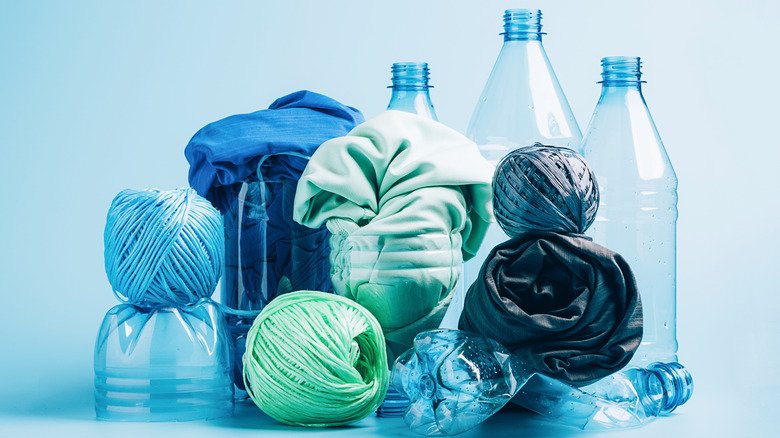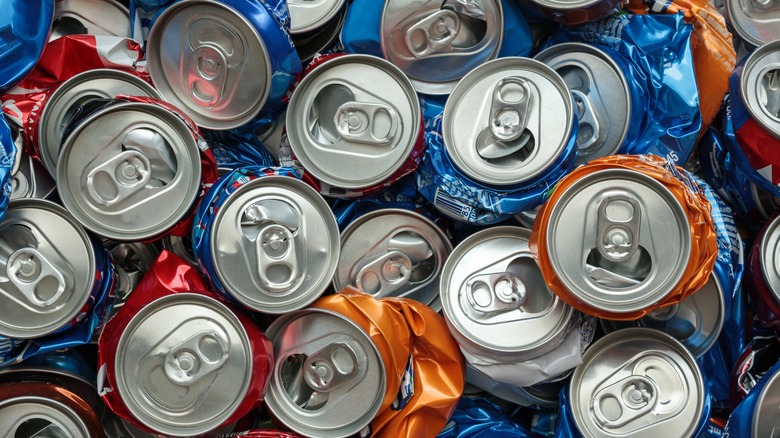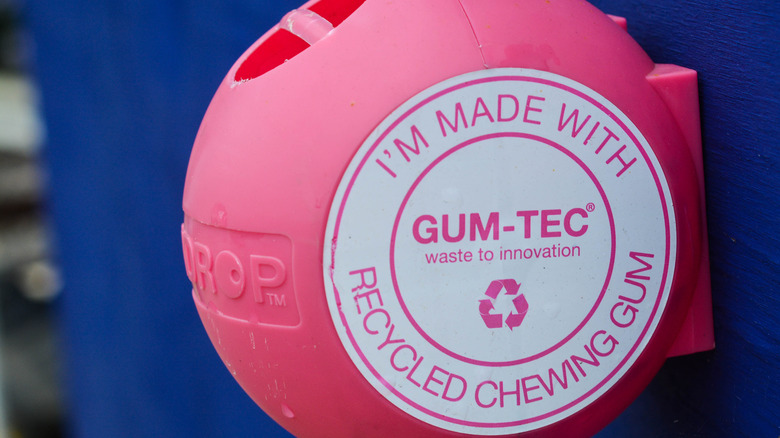What Does It Really Mean When Something Is Made Out Of Recycled Material?
Recycling is an important part of taking care of our planet, and one small way to fight climate change. As we go about our daily lives, we can generate a significant amount of waste. According to the Environmental Protection Agency, each person in the U.S. created 4.9 pounds of trash every day in 2018. Of these 292.4 million tons of waste, 32.1% were recycled or composted. The recycled materials amounted to 69.1 tons of paper, metal, glass, plastic, and wood.
Unfortunately, not all the materials we intend to recycle actually make it through the process. Items picked up from homes are first sent to a sorting plant before they move on to a processor. Prior to 2018, the U.S. shipped one-third of its recyclables overseas. But after China began restricting accepted materials, a backup occurred with processing, causing some recyclables to end up in a landfill instead of being reused, per The New York Times.
"When it's cheap to landfill, recycling will not be 'worthwhile' so we need to start to recognize what a landfill really is: a waste of waste!" says Stephanie Kersten-Johnston, Columbia University adjunct professor and The Recycling Partnership's director of circular ventures (via Columbia Climate School). Besides the importance of freeing up planetary real estate by keeping recyclables out of landfills, there are also a lot of creative ways to transform and re-purpose recyclables into a variety of products.
Recycled products contain post-consumer and post-industrial content
Fortunately, a lot of items we use daily are made from recyclables. According to Zero Waste Communities of San Bernardino County, over 4,500 products contain some portion of recycled materials. These recycled materials can come from your home recycling bin, known as post-consumer, or from the factories that make the products in the first place, known as post-industrial. For instance, leftover aluminum from producing soda cans can be melted and re-rolled on-site as a way to recycle and reduce waste during manufacturing (via Sustainable Packaging).
While some recycled content items are straightforward, such as recycled glass bottles being made into new bottles, some materials offer more diverse options. For example, No. 1 plastic bottles, like water or soda containers, can be transformed into polar fleece clothing, backpacks, or used as filler for a puffy ski jacket, per Maine.gov. No. 1 plastic and aluminum can pull tabs are also being utilized to craft sustainable handbags.
Steel recycling, in particular, has a significant impact on carbon footprint. Besides its ability to be reused continually without compromising its quality, the energy saved by recycling steel has the ability to power almost 18 million homes for a full year, according to National Material. Every ton of new steel requires approximately 34,000 gallons of water, so it's a huge environmental savings when recycled steel can be used instead (via RTS).
Creativity in products made from recyclables is skyrocketing
For people who want to make eco-conscious purchases, more manufacturers are letting consumers know which of their products are made from recycled material. For instance, Adidas' "Primegreen" line includes shoes and activewear that are specifically made from recyclables. These offerings are part of the company's initiative to stop using new polyester by 2024, per Interesting Engineering.
Shoppers also have options for incorporating recycled-material options for self-care items. For products that need to be replaced multiple times a year, such as toothbrushes, both the Preserve and the Bogo toothbrushes are made from recycled plastic, per Wirecutter. To continue the cycle of reuse, used Preserve toothbrushes can be recycled directly through the manufacturer.
Some companies are pushing the boundaries of what can be recycled. London's Gumdrop Ltd. is thinking beyond traditional paper, plastic, glass, and aluminum and has focused on recycling chewing gum. Gumdrop has recycling bins around the city for the collection of used gum. Not only are the bins made from recycled gum, but the company also recycles the used gum into other products like footwear and phone covers.
To acquaint designers with the possibilities of recycled materials, Material ConneXion maintains a library of samples and recipes for reducing waste with innovative recycling, per NPR. The company's collection includes novel concepts, such as making vegan leather from apple peels, or a method for manufacturing kitchen counters using fish scales.



